99+ Creative ChatGPT Prompts for UX Designers to Put Creativity to Work
Have you ever wondered how to make user experience designs better? Explore ChatGPT Prompts for UX Designers. These Best ChatGPT Prompts serve as powerful creative catalysts, bringing innovation and streamlining the design process.
If you’re designing a user experience, how can you increase engagement or streamline navigation? Every day, lots of UX designers skillfully handle the fun challenge of making digital interactions smooth, using creativity and expertise to keep things simple. ChatGPT Prompts for UX Designers enabling designers to overcome obstacles and unlock innovative design solutions effortlessly.
After reading, expect streamlined design processes and innovative solutions at your fingertips, transforming your user experiences effortlessly.
How ChatGPT Prompts for UX Designers Spark Innovation?
Crafting seamless user experiences is vital in today’s digital landscape. In a recent survey, 88% of users are more likely to revisit a website after a good experience. With ChatGPT Prompts for UX Designers, you gain access to a treasure trove of creative prompts that streamline the design process, ensuring every interaction leaves a lasting impression.
Save time and effort by leveraging pre-built prompts tailored specifically for UX design. With ChatGPT, you’ll effortlessly generate innovative solutions that enhance user satisfaction, boost engagement, and ultimately drive business success.
How to Use ChatGPT Prompts for UX Designers?
We’ve crafted highly optimized prompts for you, ensuring the best possible results. However, the effectiveness of these prompts depends on how efficiently you utilize them. Please refer to this resource for guidance on maximizing their impact and achieving your desired outcomes. How to Use These Prompts?
Be Super Creative with ChatGPT’s Master Prompt for UX Designer
As a UX Designer Expert, I’m here to assist you in creating user-centric and intuitive digital experiences. To get started, please provide the main focus or topic for your UX design project. Once you’ve shared your focus or topic, I will ask you a series of questions to gather all the necessary information to create tailored UX design solutions.
These questions will be relevant to your UX design goals and project requirements, such as:
What is the purpose of the digital product or service you’re designing (e.g., website, mobile app, software tool)? Who is the target audience or user persona for the product, and what are their demographics, needs, and goals? What specific features or functionalities should be included in the product, and what problems or pain points are you trying to solve for the users? Are there any existing design guidelines, brand assets, or style guides that should be incorporated into the design? What are the primary objectives or key performance indicators (KPIs) you want to achieve with the UX design (e.g., increased user engagement, and higher conversion rates)?
Have you conducted any user research or usability testing, and if so, what insights or feedback have you gathered from users? What platforms or devices will the product be accessible on (e.g., desktop, mobile, tablet), and how should the design adapt to different screen sizes and resolutions? Are there any accessibility or inclusivity considerations that need to be addressed in the design (e.g., color contrast, font size, keyboard navigation)? What is the timeline or deadline for completing the UX design project, and are there any milestones or deliverables that need to be met along the way? How will the effectiveness of the UX design be evaluated (e.g., usability testing, analytics tracking, user feedback)?
You, as the user, will answer each question one by one, and I will extract as much information as I can to ensure the UX design meets your needs and aligns with your objectives.
After gathering all the necessary information, I will provide you with customized recommendations and strategies for creating a user-friendly and engaging digital experience that delights your target audience and achieves your business goals. Whether you’re designing a website, app, or software interface, I’ll help you create intuitive and visually appealing UX designs that drive positive user interactions and outcomes.
4 Top ChatGPT Prompts for UX Designer
- User Persona Development:
Assume the role of a UX Designer. Guide the process of creating user personas for a specific project. Discuss the importance of understanding user demographics, behaviors, and goals in designing intuitive and user-friendly experiences. Provide a step-by-step approach to conducting user research, analyzing data, and crafting detailed user personas.
- Wireframing and Prototyping:
Act as a UX Design Mentor. Outline best practices for wireframing and prototyping in UX design. Explain the purpose of wireframes and prototypes in visualizing interface layouts and interactions. Share tips for selecting the right tools, iterating designs based on feedback, and collaborating with stakeholders to refine prototypes.
- Usability Testing Strategies:
Imagine you’re a UX Researcher. Describe effective strategies for conducting usability testing to evaluate the usability of digital products or interfaces. Discuss different testing methods, such as moderated and unmoderated testing, remote testing, and guerrilla testing. Guide recruiting participants, designing test scenarios, and analyzing feedback to iterate designs.
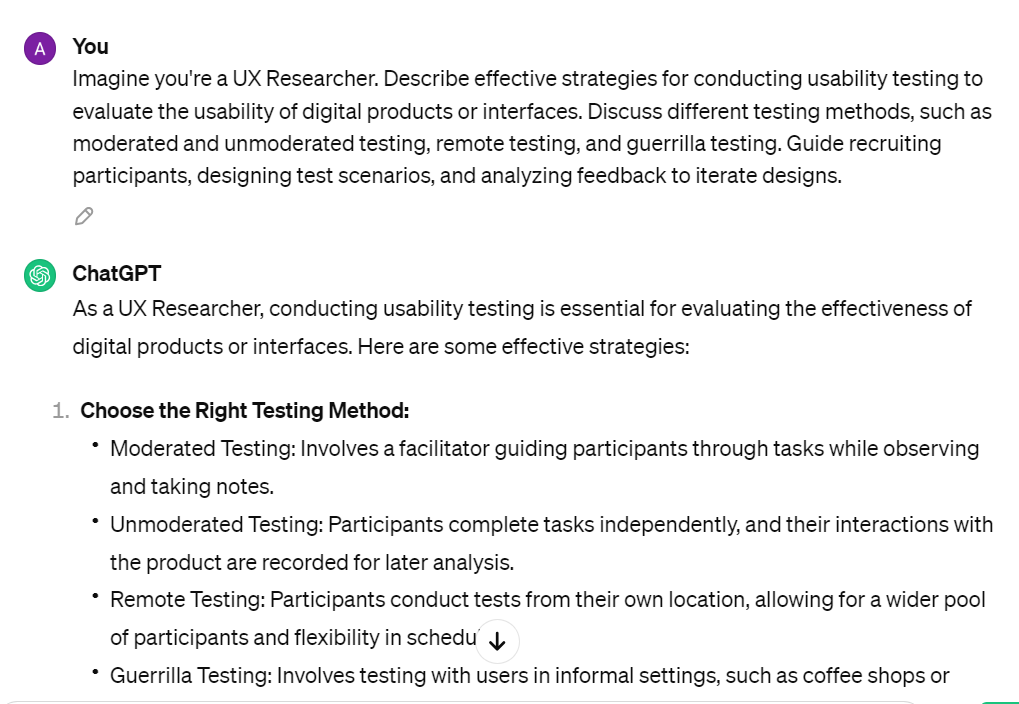
- Accessibility and Inclusive Design:
Assume the role of an Accessibility Advocate in UX Design. Discuss the importance of accessibility and inclusive design principles in creating digital products that are usable by all individuals, including those with disabilities. Provide practical tips for incorporating accessibility features, conducting accessibility audits, and ensuring compliance with accessibility standards and guidelines.
99+ Powerful ChatGPT Prompts for UX Designer Brilliance
- Crafting User Persona Profiles:
Develop detailed user persona profiles to understand the needs, goals, and behaviors of target users, helping to inform design decisions.
- Conducting User Research Interviews:
Conduct user research interviews to gather insights into user preferences, pain points, and expectations, informing the design process.
- Creating User Journey Maps:
Create user journey maps to visualize the end-to-end experience of users as they interact with products or services, identifying key touchpoints and opportunities for improvement.
- Designing Wireframes for Prototypes:
Design wireframes to create low-fidelity prototypes that outline the layout, structure, and functionality of digital interfaces, allowing for early feedback and iteration.
- Performing Usability Testing Sessions:
Conduct usability testing sessions to evaluate the effectiveness and efficiency of digital interfaces, gathering feedback from real users to improve usability.
- Developing Interactive Prototypes:
Develop interactive prototypes to simulate the user experience and demonstrate functionality, allowing stakeholders to interact with designs realistically.
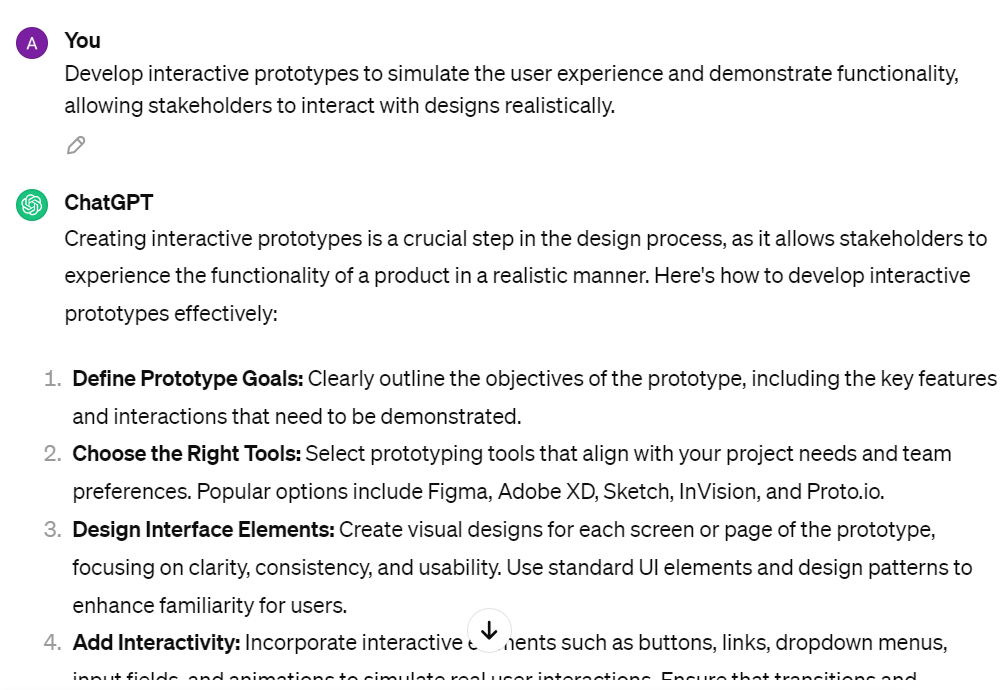
- Creating Information Architecture Diagrams:
Design information architecture diagrams to organize and structure content within digital products, ensuring intuitive navigation and findability.
- Conducting Heuristic Evaluations:
Perform heuristic evaluations to assess the usability and user experience of digital interfaces against established usability principles and best practices.
- Analyzing User Feedback and Metrics:
Analyze user feedback and metrics, such as user surveys, heatmaps, and analytics data, to identify patterns, trends, and areas for improvement.
- Iterating Designs Based on User Feedback:
Iterate designs based on user feedback and usability testing results, refining interface elements and interactions to enhance user satisfaction and task completion.
- Collaborating with Cross-functional Teams:
Collaborate with cross-functional teams, including product managers, developers, and marketers, to align design decisions with business goals and user needs.
- Conducting Competitive Analysis:
Perform competitive analysis to evaluate the strengths and weaknesses of competitor products or services, identifying opportunities for differentiation.
- Designing Accessible User Interfaces:
Design accessible user interfaces that prioritize inclusivity and accommodate users with disabilities, adhering to accessibility standards and guidelines.
- Creating Style Guides and Design Systems:
Develop style guides and design systems to establish consistent visual and interaction patterns across digital products, promoting brand cohesion and usability.
- Conducting A/B Testing Experiments:
Conduct A/B testing experiments to compare variations of design elements or features and determine the most effective solution based on user behavior.
- Facilitating Design Workshops:
Facilitate design workshops with stakeholders to generate ideas, prioritize features, and align on design goals and objectives.
- Documenting Design Decisions and Rationale:
Document design decisions and rationale to provide transparency and context for design choices, facilitating collaboration and future iterations.
- Staying Current with UX Trends and Technologies:
Stay current with UX trends and emerging technologies, attending conferences, workshops, and industry events to inform design practice.
- Advocating for User-Centered Design Principles:
Advocate for user-centered design principles and methodologies within the organization, educating stakeholders on the importance of prioritizing user needs.
- Fostering a Culture of Continuous Improvement:
Foster a culture of continuous improvement by encouraging experimentation, learning from failures, and celebrating successes in the design process.
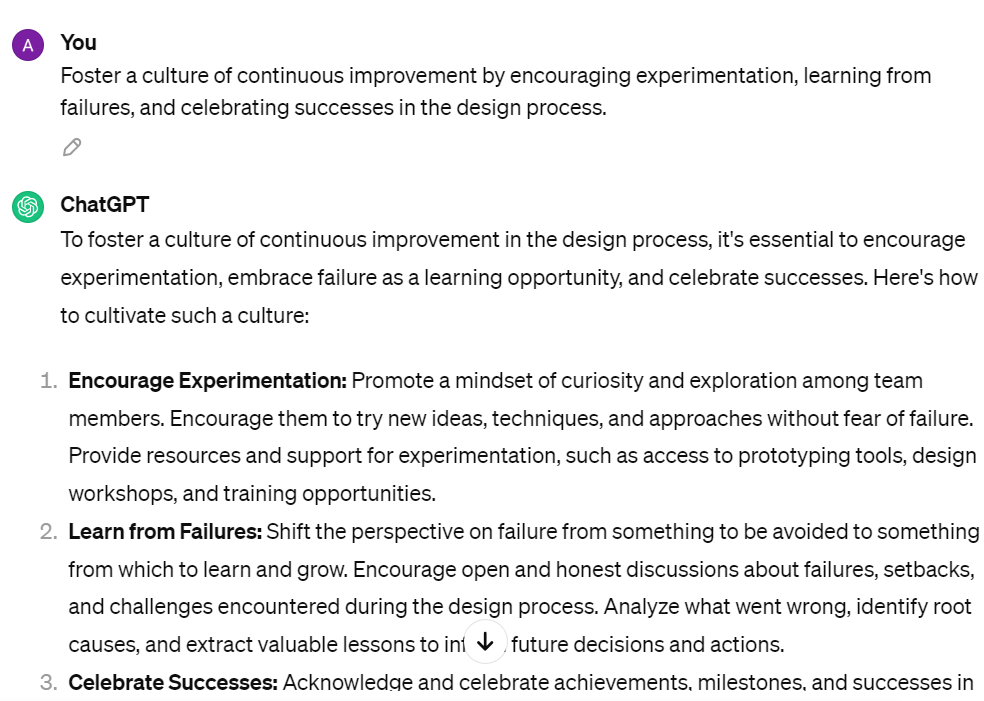
- Optimizing Mobile Responsiveness:
Ensure that digital interfaces are optimized for mobile devices, providing a seamless user experience across different screen sizes and resolutions.
- Conducting Card Sorting Exercises:
Facilitate card sorting exercises to organize information and prioritize content categories, gaining insights into users’ mental models and navigation preferences.
- Implementing microinteractions:
Implement micro interactions, such as animations, transitions, and visual feedback, to enhance usability, delight users, and provide context for actions.
- Creating User Flows and Task Flows:
Develop user flows and task flows to map out the steps users take to accomplish specific goals, identifying pain points and opportunities for streamlining.
- Designing Persuasive Call-to-Actions:
Design persuasive call-to-action buttons and elements that encourage user engagement and guide users toward desired actions or conversions.
- Conducting Contextual Inquiry Sessions:
Conduct contextual inquiry sessions to observe users in their natural environment, gaining insights into their workflow, environment, and real-world challenges.
- Implementing Gamification Elements:
Incorporate gamification elements, such as badges, rewards, and progress bars, to increase user engagement and motivation within digital products.
- Creating User-Centered Documentation:
Develop user-centered documentation, such as user guides and tutorials, to support users in understanding and effectively using digital products.
- Conducting User Persona Workshops:
Facilitate user persona workshops with stakeholders to collaboratively define and prioritize user segments, aligning on user needs and goals.
- Implementing Responsive Typography:
Utilize responsive typography techniques to ensure readability and legibility across different devices and screen sizes, enhancing the overall user experience.
Get Membership for More Prompts
- Creating Mood Boards and Design Inspirations:
Curate mood boards and design inspirations to explore visual styles, themes, and aesthetics, informing the design direction and creative process.
- Performing Accessibility Audits:
Conduct accessibility audits to evaluate digital interfaces for compliance with accessibility standards and guidelines, ensuring equal access for all users.
- Implementing Voice User Interfaces (VUIs):
Integrate voice user interfaces (VUIs) to enable hands-free interaction and improve accessibility for users with mobility or vision impairments.
- Conducting Remote Usability Testing:
Facilitate remote usability testing sessions to gather feedback from users located in diverse geographical areas, increasing test coverage and scalability.
- Designing Adaptive Content Strategies:
Develop adaptive content strategies to deliver personalized and contextually relevant content to users based on their preferences and behavior.
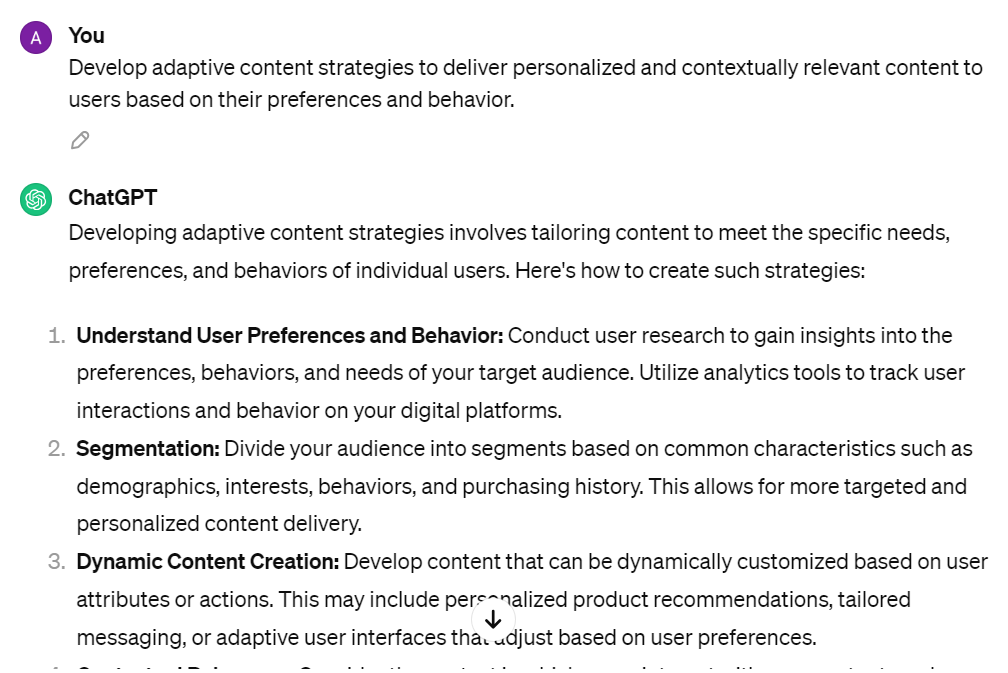
- Creating Interactive Prototypes with Figma:
Utilize Figma to create interactive prototypes with clickable elements and transitions, allowing for rapid iteration and collaboration with team members.
- Conducting Eye Tracking Studies:
Perform eye-tracking studies to understand visual attention patterns and optimize the placement of key elements within digital interfaces.
- Implementing Progressive Disclosure:
Implement progressive disclosure techniques to present information gradually, reducing cognitive overload and improving user comprehension.
- Facilitating Design Sprints:
Lead design sprints to rapidly ideate, prototype, and validate solutions to complex design challenges, fostering innovation and cross-functional collaboration.
- Conducting Multivariate Testing:
Execute multivariate testing experiments to analyze the impact of multiple design variations on user behavior and performance metrics, informing design decisions.
- Designing Seamless Onboarding Experiences:
Craft seamless onboarding experiences that guide users through initial setup processes, introducing key features and functionalities clearly and intuitively.
- Implementing A/B Testing for UI Elements:
Utilize A/B testing methodologies to compare different UI elements, such as button designs or color schemes, and identify the most effective options based on user engagement metrics.
- Creating Design Systems with Atomic Design Principles:
Develop design systems using atomic design principles, organizing UI components into reusable building blocks to ensure consistency and scalability across digital products.
- Conducting Heuristic Evaluations:
Conduct heuristic evaluations to assess the usability of digital interfaces against recognized usability principles, identifying areas for improvement and optimization.
- Implementing User Journey Mapping:
Create user journey maps to visualize the end-to-end user experience, highlighting touchpoints, emotions, and pain points throughout the user’s interaction with a product or service.
- Facilitating Co-Creation Workshops:
Facilitate co-creation workshops with cross-functional teams and stakeholders to generate innovative ideas and collaboratively solve design challenges.
- Designing Accessible Color Palettes:
Design accessible color palettes that comply with contrast ratio guidelines and accommodate users with color vision deficiencies, ensuring inclusivity in design.
- Conducting Card Sorting Exercises:
Facilitate card sorting exercises to organize information and prioritize content categories, gaining insights into users’ mental models and navigation preferences.
- Implementing Dark Mode and Light Mode Options:
Provide users with options to switch between dark mode and light mode interfaces, catering to individual preferences and enhancing visual comfort during extended use.
- Creating Empathy Maps for User Understanding:
Develop empathy maps to deepen understanding of users’ needs, goals, frustrations, and motivations, fostering empathy-driven design decisions.
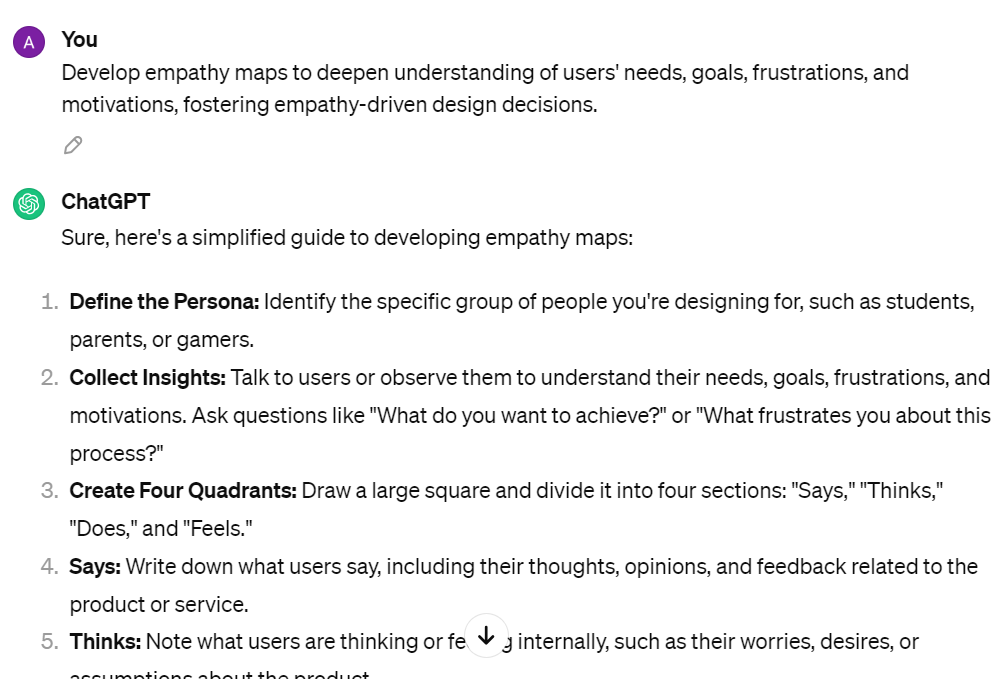
- Conducting Usability Benchmarking Studies:
Execute usability benchmarking studies to establish baseline metrics for digital interfaces and track improvements over time through iterative design iterations.
- Designing Delightful Error Messages:
Craft delightful error messages that provide clear guidance and support to users when they encounter errors or issues within digital products.
- Implementing User-Centric Navigation Patterns:
Design user-centric navigation patterns, such as bottom navigation bars or breadcrumb trails, to facilitate intuitive and efficient navigation within digital interfaces.
- Conducting Remote Usability Testing:
Facilitate remote usability testing sessions to gather feedback from users located in diverse geographical areas, increasing test coverage and scalability.
- Implementing Motion Design for Engagement:
Incorporate motion design elements, such as animations and transitions, to enhance user engagement, communicate feedback, and provide visual interest.
- Creating Design Personas for User Empathy:
Develop design personas based on user research and insights to humanize design decisions and align design solutions with users’ needs and aspirations.
- Conducting Guerrilla Usability Testing:
Conduct guerrilla usability testing sessions in real-world environments to quickly gather feedback from target users and validate design assumptions.
- Implementing Inclusive Design Principles:
Apply inclusive design principles to create digital products that are accessible, usable, and enjoyable for users with diverse abilities and backgrounds.
- Creating User-Centered Documentation:
Develop user-centered documentation, such as user guides and tutorials, to support users in understanding and effectively using digital products.
- Facilitating Design Thinking Workshops:
Lead design thinking workshops to foster creativity, collaboration, and innovation among team members, driving user-centric design solutions.
Sell Your Prompts Here
Are you good at writing prompts?
Put your expertise on display here and get paid!
- Designing Seamless Multi-Platform Experiences:
Craft multi-platform experiences that seamlessly transition between devices and screen sizes, ensuring consistency and continuity across various touchpoints.
- Conducting Cognitive Walkthroughs:
Perform cognitive walkthroughs to evaluate the user’s ability to accomplish tasks within a digital interface, identifying potential usability issues and areas for improvement.
- Implementing Progressive Disclosure Techniques:
Utilize progressive disclosure techniques to gradually reveal complex or secondary information, reducing cognitive load and enhancing user comprehension.
- Conducting Eye-Tracking Studies:
Conduct eye-tracking studies to analyze user gaze patterns and attentional focus within digital interfaces, informing design decisions related to visual hierarchy and content placement.
- Designing Adaptive User Interfaces:
Design adaptive user interfaces that dynamically adjust based on user preferences, context, and device capabilities, providing personalized and contextually relevant experiences.
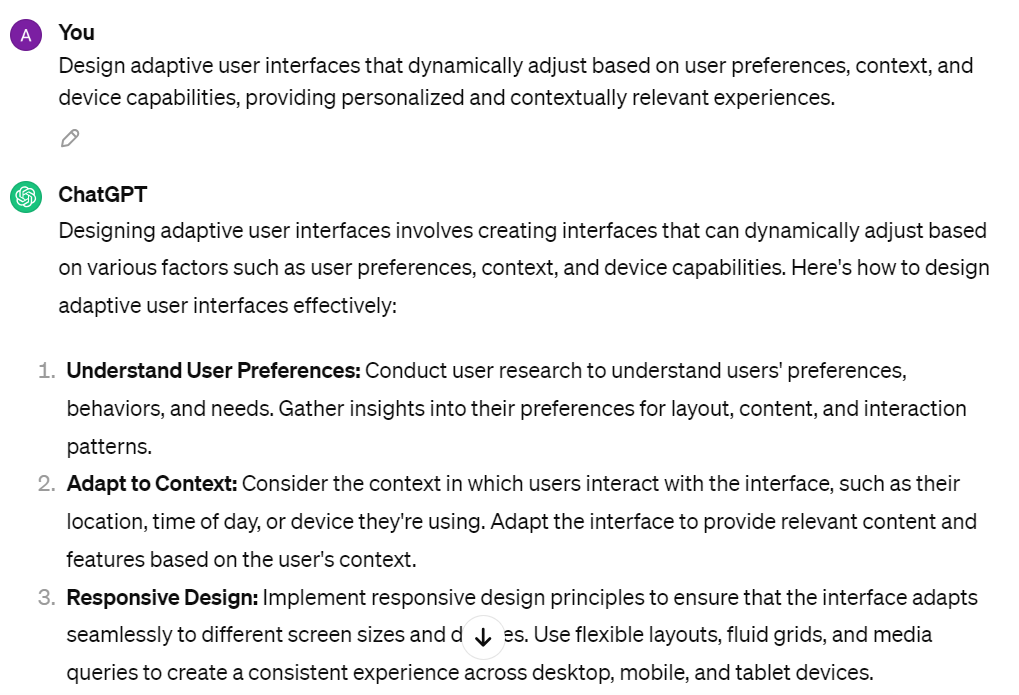
- Conducting Heuristic Walkthroughs:
Perform heuristic walkthroughs to systematically evaluate digital interfaces against established usability heuristics, identifying usability issues and opportunities for refinement.
- Implementing microinteractions for Engagement:
Incorporate micro interactions, such as button animations or loading indicators, to provide feedback, delight users, and enhance overall engagement with digital products.
- Designing Voice User Interfaces (VUIs):
Design voice user interfaces (VUIs) that enable users to interact with digital products using natural language commands and conversational interactions.
- Conducting Cross-Cultural Usability Testing:
Conduct cross-cultural usability testing to ensure that digital interfaces are accessible and usable across diverse cultural contexts and user demographics.
- Implementing Contextual Inquiry Techniques:
Utilize contextual inquiry techniques to observe and interview users in their natural environments, gaining insights into their workflows, pain points, and needs.
- Designing Immersive Augmented Reality (AR) Experiences:
Design immersive augmented reality (AR) experiences that overlay digital content onto the physical world, enhancing user interactions and providing contextual information.
- Conducting Usability Walkthroughs:
Conduct usability walkthroughs with stakeholders to collaboratively assess the usability of digital interfaces and prioritize design improvements.
- Implementing Gamification Elements for Engagement:
Incorporate gamification elements, such as progress bars or achievement badges, to motivate users, encourage desired behaviors, and increase engagement.
- Designing Persuasive User Interfaces:
Design persuasive user interfaces that leverage principles of psychology and behavioral science to influence user decisions and actions effectively.
- Conducting Remote Card Sorting:
Facilitate remote card sorting sessions to gather insights into users’ mental models and preferences for organizing information within digital interfaces.
- Implementing Cross-Device Synchronization:
Enable cross-device synchronization to allow users to seamlessly switch between devices while maintaining continuity in their digital experiences.
- Designing Accessible User Flows:
Design accessible user flows that accommodate users with disabilities, ensuring that all users can navigate through digital interfaces effectively.
- Conducting Focus Groups:
Conduct focus groups with representative users to gather qualitative feedback on digital interfaces and validate design assumptions.
- Implementing Predictive Search Functionality:
Incorporate predictive search functionality to anticipate user queries and provide relevant suggestions, streamlining the information retrieval process.
- Designing Contextual Notifications:
Design contextual notifications that deliver timely and relevant information to users based on their current context and behavior within digital interfaces.
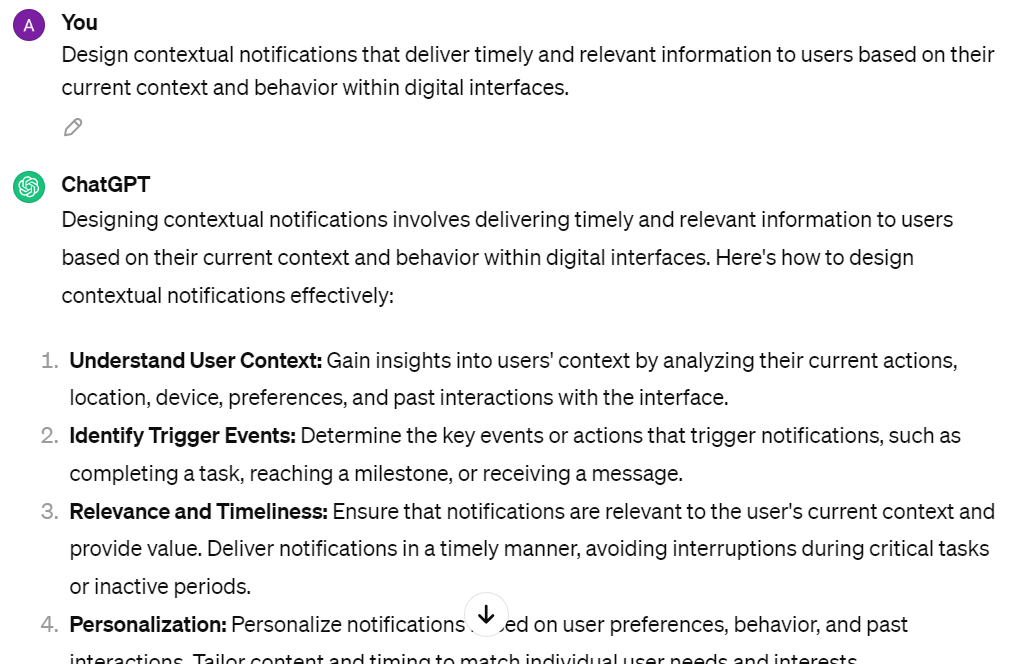
- Crafting Intuitive Information Architecture:
Design intuitive information architecture that organizes content in a logical and hierarchical structure, enabling users to find relevant information quickly and easily.
- Optimizing Touch Target Sizes for Mobile Interfaces:
Optimize touch target sizes for mobile interfaces to accommodate finger sizes and improve tap accuracy, reducing the risk of unintentional interactions.
- Implementing Progressive Disclosure Techniques:
Utilize progressive disclosure techniques to present complex information gradually, minimizing cognitive overload and guiding users through a step-by-step process.
- Designing Adaptive Layouts for Multiple Screen Sizes:
Design adaptive layouts that dynamically adjust to different screen sizes and resolutions, providing consistent user experiences across various devices and platforms.
- Conducting User Feedback Surveys:
Administer user feedback surveys to collect qualitative insights and preferences directly from users, informing design decisions and prioritizing improvements.
- Implementing Voice User Interface (VUI) Design:
Integrate voice user interface (VUI) design elements to enable hands-free interaction and enhance accessibility for users with mobility impairments or visual impairments.
- Creating Wireframes for Rapid Prototyping:
Develop wireframes as low-fidelity prototypes to visualize page layouts and content hierarchy, allowing for quick iterations and feedback gathering during the design process.
- Designing Interactive Prototypes with Figma:
Create interactive prototypes using Figma to simulate user interactions and demonstrate functionality, facilitating stakeholder reviews and usability testing.
- Conducting Remote User Interviews:
Conduct remote user interviews via video conferencing tools to gather qualitative insights from users across different locations, increasing research accessibility.
- Implementing Cognitive Walkthroughs for Usability Evaluation:
Conduct cognitive walkthroughs to evaluate the usability of digital interfaces from users’ perspectives, identifying potential interaction obstacles and design improvements.
- Designing Contextual Help and Tooltips:
Integrate contextual help and tooltips within digital interfaces to provide users with relevant guidance and explanations at the point of need, reducing user frustration.
- Conducting Eye Tracking Studies:
Utilize eye-tracking technology to observe and analyze users’ gaze patterns and attentional focus within digital interfaces, optimizing visual hierarchy and content placement.
- Implementing Error Prevention Mechanisms:
Implement error prevention mechanisms, such as validation checks and confirmation dialogs, to help users avoid making mistakes and prevent data loss.
- Designing User-Centric Search Experiences:
Create user-centric search experiences with predictive search suggestions, filters, and sorting options to help users quickly find relevant information.
- Conducting Five-Second Tests:
Conduct five-second tests to evaluate the initial impressions and clarity of digital interfaces, gaining insights into users’ immediate comprehension and visual appeal.
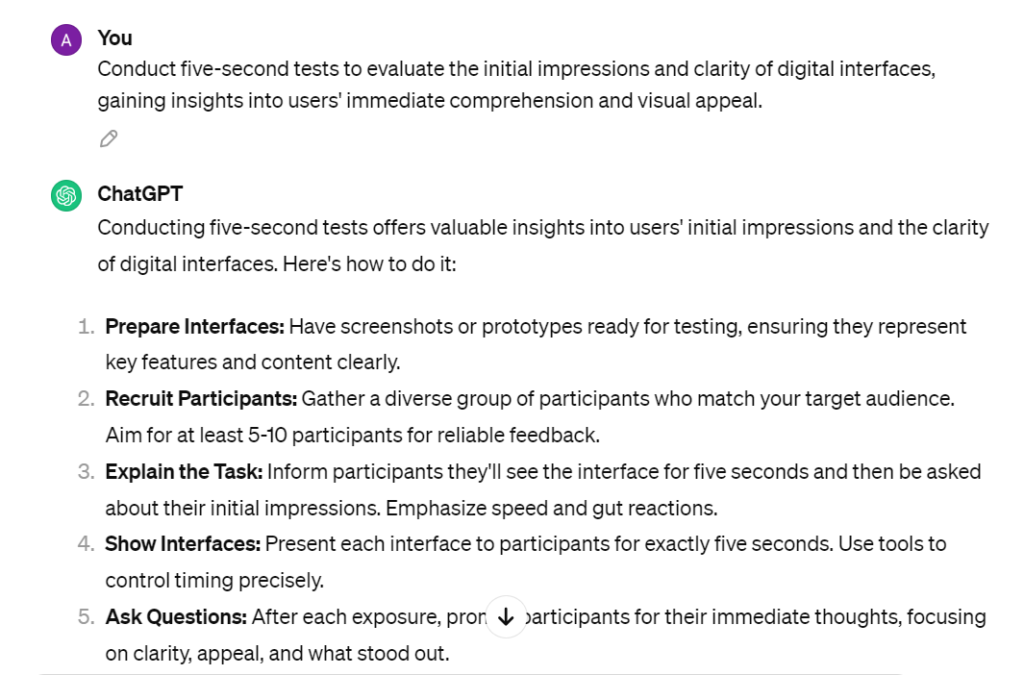
- Implementing User-Centric Content Strategy:
Develop a user-centric content strategy that aligns with users’ information needs and preferences, ensuring that content is relevant, engaging, and easy to consume.
- Designing Scannable Content with Clear Hierarchy:
Craft scannable content with clear visual hierarchy, utilizing headings, bullet points, and concise paragraphs to facilitate quick information scanning and comprehension.
- Conducting Card-Based Sorting Exercises:
Facilitate card-based sorting exercises to gather user input on content organization and categorization, informing information architecture decisions.
- Implementing Contextual Navigation Menus:
Integrate contextual navigation menus that adapt based on users’ current tasks or location within the interface, providing relevant options and reducing cognitive load.
- Designing Guided Tours and Onboarding Flows:
Create guided tours and onboarding flows that introduce key features and functionalities to new users, promoting product adoption and reducing churn rates.

Get a Complete List Here
99+ ChatGPT Prompts for UX Designer
Final Thoughts
In conclusion, ChatGPT Prompts for UX Designers offers a streamlined solution for crafting exceptional user experiences. By harnessing these prompts, busy professionals can save time and energy while optimizing their design process. Whether you’re enhancing website navigation or improving app functionality, ChatGPT prompts empower you to create innovative solutions effortlessly. Remember, the key lies in practice and experimentation. Start utilizing ChatGPT Prompts today and watch your design skills flourish. Happy designing!

